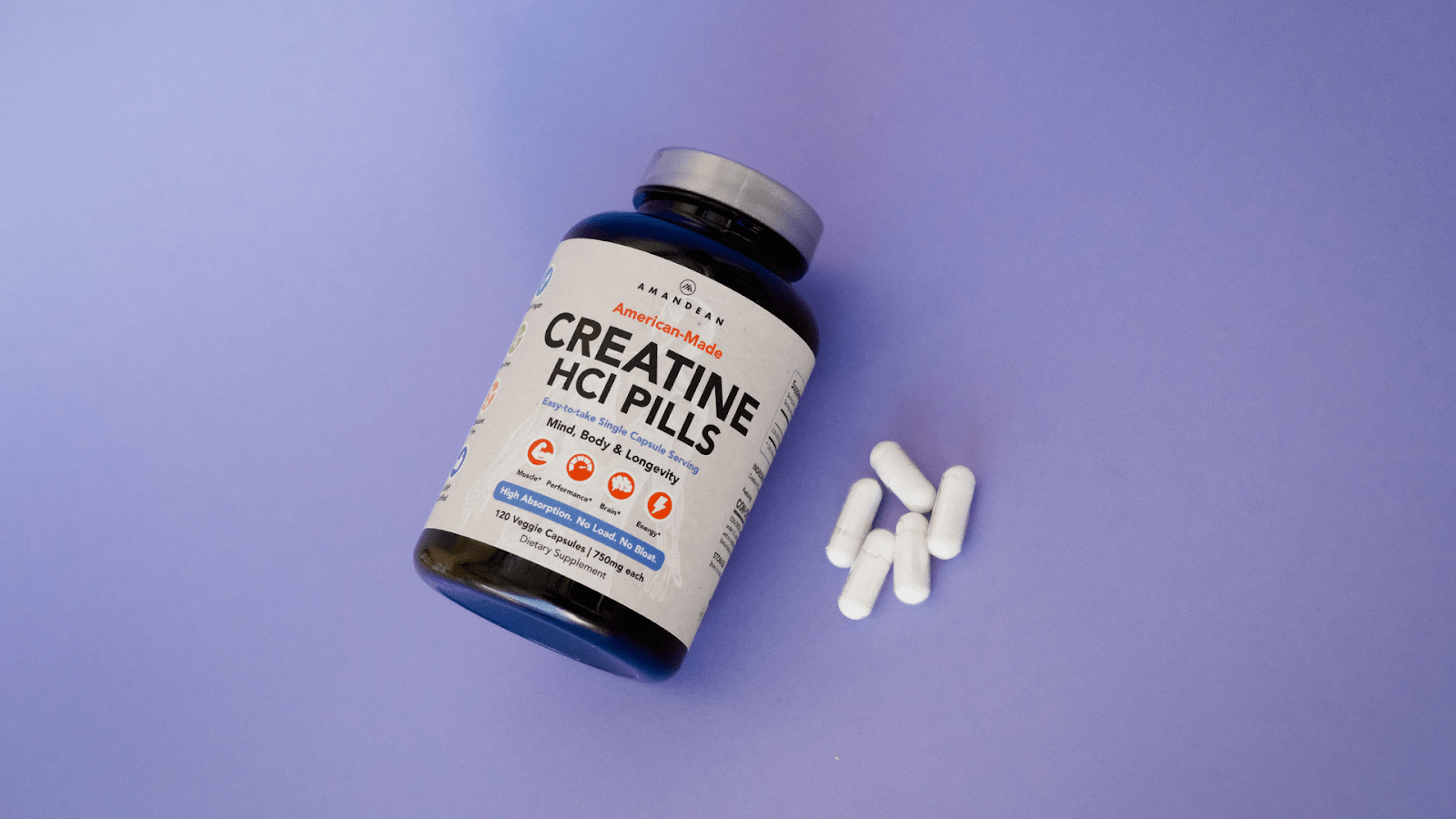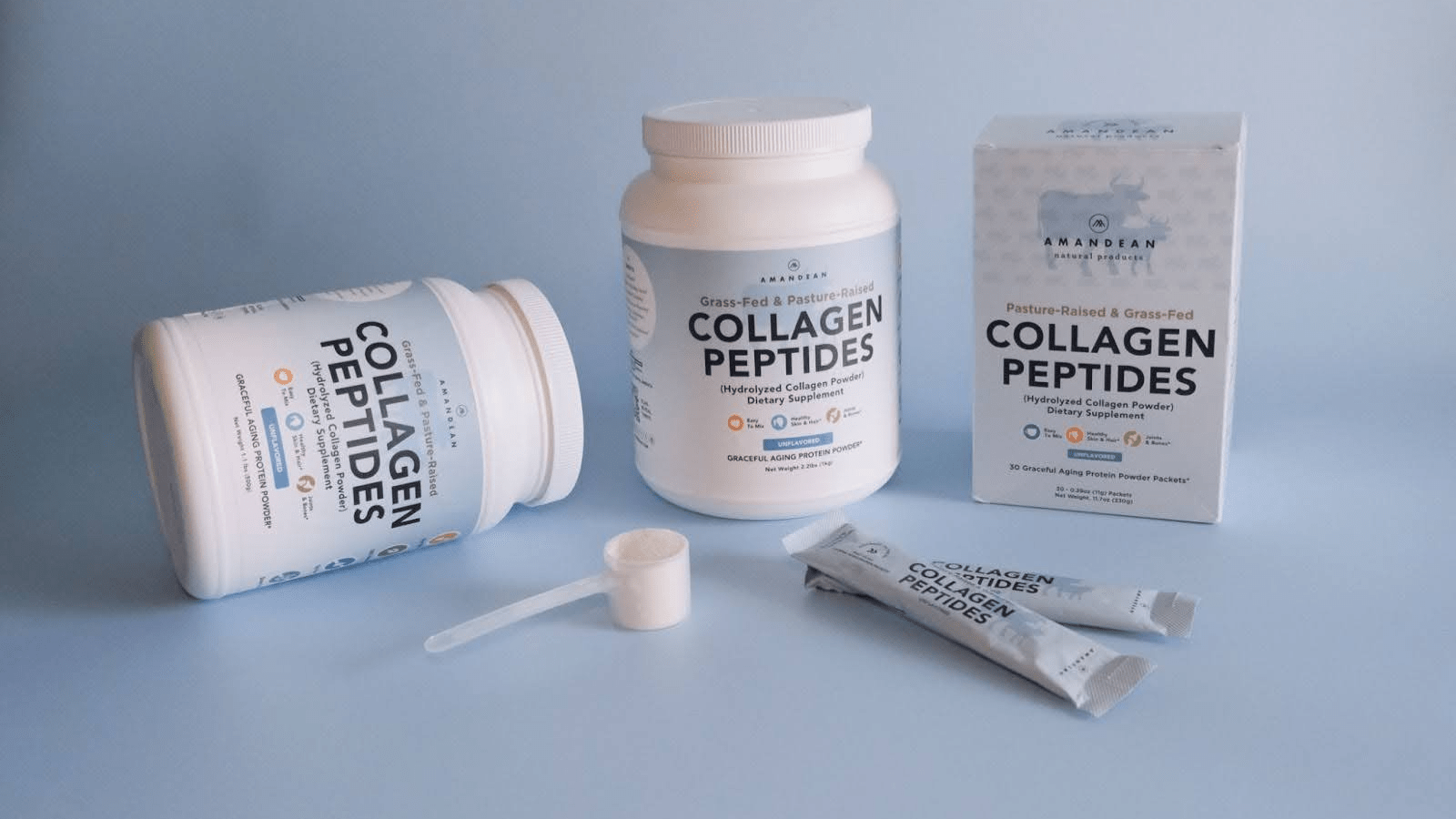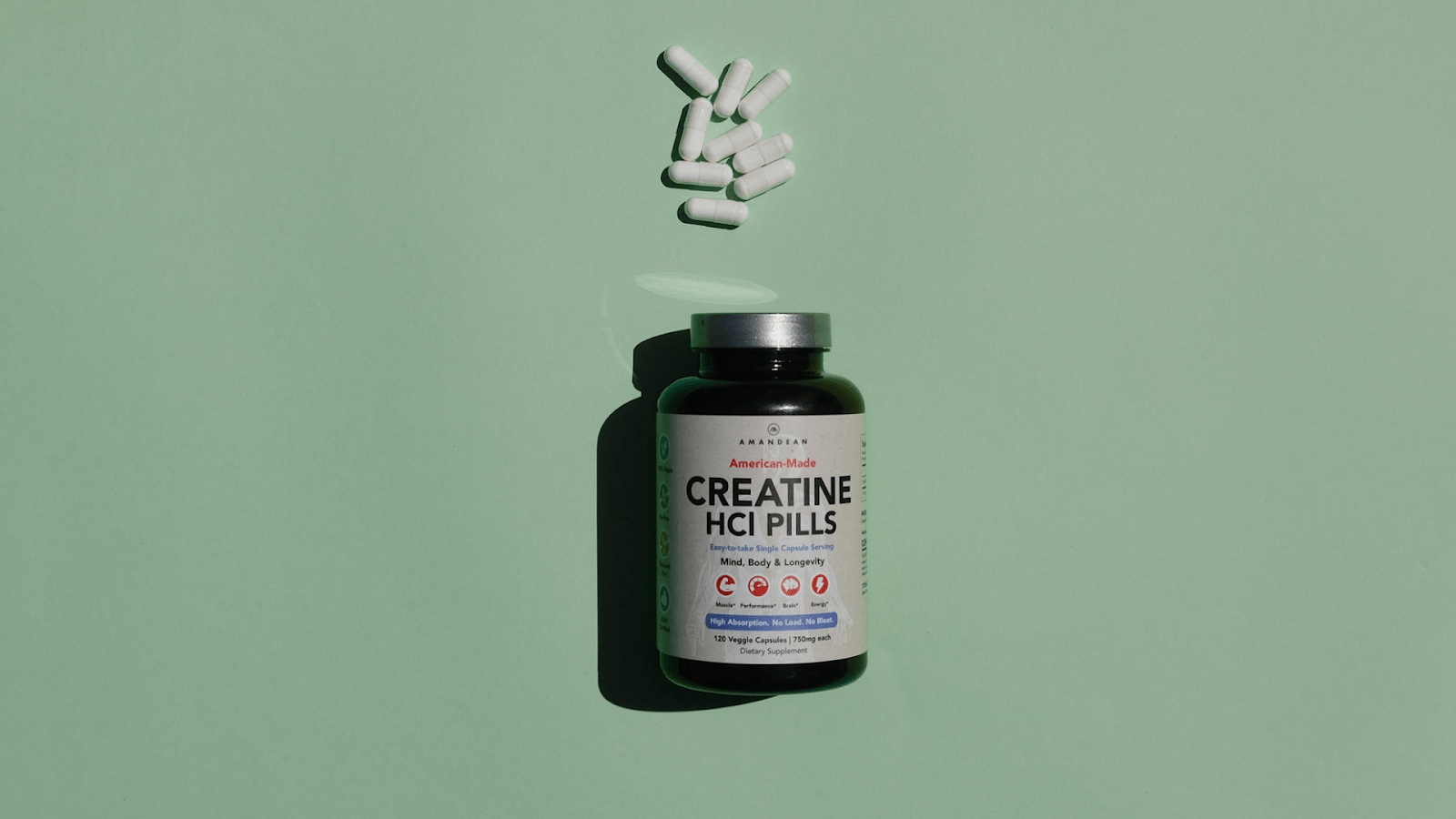Your Cart is Empty

July 08, 2021 7 min read
Collagen supplements have exploded in popularity lately. Touting perks such as improved skin elasticity and reduced joint pain, people naturally wonder what it is, where it comes from, and how to best receive the benefits of collagen.
Take our quiz and find which supplements your body is craving.

Collagen makes up about a third of the proteins in the human body. It is a fibrous protein found in bones, muscle, skin, and tendons. There are at least 16 different types of collagen, but most belong to type I, type II, and type III. These different types of collagen molecules have different structures and functions. But basically, they are like a good coach, therapist, attorney, or accountant: they keep us from falling apart!
Like all proteins, amino acids provide the molecular structure of collagen. Out of the hundreds of amino acids found in nature, only twenty are used by the human body. These twenty amino acids are arranged in various amounts and in different patterns to form distinct proteins. Collagen uses nineteen of these twenty amino acids (sorry cysteine!), the three most abundant of which are glycine, lysine, and hydroxyproline. The latter, hydroxyproline, or just "proline," is found only in collagen. (One has to wonder why cysteine was not invited to collagen’s party and why proline is a one-trick-pony? (Cue Homer Simpson, "Stupid evolution!")
The term "essential amino acid" is a bit of a misnomer as all twenty of them used by the human body are essential to our health and well being. Amazingly, we use these twenty amino acids to make more than 100,000 unique proteins. However, we can only produce thirteen of them ourselves, meaning nine of them must be consumed as food or beverage. For more information on amino acids, see this article from the National Institutes of Health on Biochemistry, Essential Amino Acids.
Among these nine "essential" amino acids, exists lysine, mentioned above. This means that in order for collagen synthesis to occur, a person must consume foods and beverages that are high in lysine. Fortunately, this is not difficult! Meat, seafood, and dairy are all high in lysine. If you're a vegetarian or vegan, don't worry, many non-animal sources of lysine exist: beans, lentils, chickpeas, and soy products are high in lysine, as are many fruits and vegetables. Check out this article from Healthline: 40 sources of Lysine to Add to Your Plate.

The short answer is yes. Hot coffee or any hot beverage will not destroy collagen protein. Degradation occurs at higher temperatures than that of boiling water. It is definitely safe to say that you can mix collagen powder in your coffee! Add a scoop of collagen powder first, coffee second, and milk or creamer third.
During collagen production, the proteins are denatured, meaning that they are unfolded and/or changed slightly. This denaturation does not affect the health benefits of collagen. High temperatures, however, can definitely cause degradation. Gram per gram, collagen fibers are stronger than steel, but even steel melts! At higher temperatures, chemical reactions occur that reduce collagen's health benefits. Unfortunately, degradation begins at about 300 F/150 C, meaning that collagen is not heat stable enough to use in baking.
But that doesn't mean you can't mix some into hot food. As long as you wait until the food is ready to be served, it will be cool enough to avoid degradation. A popular food to add collagen powder to is mashed potatoes. Since it doesn't have much flavor, you can add it to mostly anything. Think soup, oatmeal, mixed veggies, sauces, anything really.
Many things can deplete the levels of collagen within your body. Understanding them could help with your skin care and joint health. Some things that can reduce our collagen health are:

Avoiding tobacco and excess sun exposure while following a healthful dietary and exercise regime can help protect collagen, keeping your skin, bones, muscles, and joints healthier longer.

Earlier, we mentioned that only collagen contains lysine and that lysine is essential to making collagen. Can you see where this is going? By eating foods that contain collagen, you get all the building blocks needed for making collagen. The most famous of these is “bone broth.”
Bone broth is a highly nutritious stock made by simmering animal bones and connective tissue. Using acid, such as vinegar or lemon juice, breaks down the collagen and connective tissue. This leaves you with a tasty, nutritious liquid commonly used in soups and sauces. According to a Healthline article, Bone Broth: How to Make It and 6 Reasons Why You Should, there is little research on the benefits of bone broth. However, it is "time tested" and there is a wealth of anecdotal evidence that suggests it has potent health benefits. Below is Healthline's recipe:
Ingredients
Directions
You can also add vegetables, herbs, or spices to your broth to enhance the flavor. Common additions include garlic, onion, celery, carrot, parsley, and thyme. These can be added right away in step one.

A healthful diet can help the body produce collagen. Nutrients that may support collagen formation include:
Collagen supplementation is another option for increasing your collagen intake. Collagen powder, collagen protein, and collagen peptides (hydrolyzed collagen) are all available over the counter or online. Even protein powders are generally good sources, but check the label and do a little research.
Collagen peptides or hydrolyzed collagen are supplements that contain the building blocks of collagen. Basically, enzymes and hydrolysis are used to make the collagen more soluble and easier to digest. The US National Institutes of Health states in a report about collagen peptides that they are "a source of physiologically active peptides and conditionally indispensable amino acids that have the potential to optimize health and address physiological needs posed by aging and exercise."
Some things to know about collagen:
If you found this blog interesting, please don't hesitate to share it on your favorite social media.
Collagen makes up about a third of the proteins in the human body.
Hot coffee or any hot beverage will not destroy collagen protein.
A high-sugar diet increases the rate of glycation, a process where blood sugars attach to proteins.
Many chemicals present in tobacco smoke damage collagen.
By eating foods that contain collagen, you get all the building blocks needed for making collagen.
Collagen peptides or hydrolyzed collagen are supplements that contain the building blocks of collagen.

October 17, 2025 8 min read
Find out why creatine is better for vegans! Boost your wellness game and unlock peak performance with Amandean's premium supplements today.

October 16, 2025 7 min read
Learn whether collagen in coffee is just another wellness fad. Examine the facts, benefits, and how to use collagen in coffee for beauty and joint support.

September 22, 2025 9 min read
Unlock the full benefits of creatine for women. Boost energy, beauty, and brainpower with Amandean’s clean formulas.